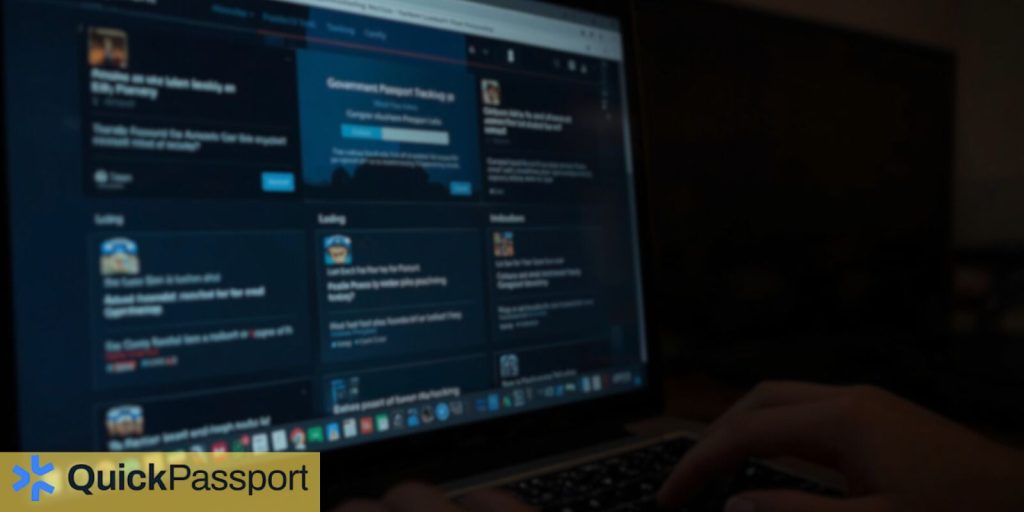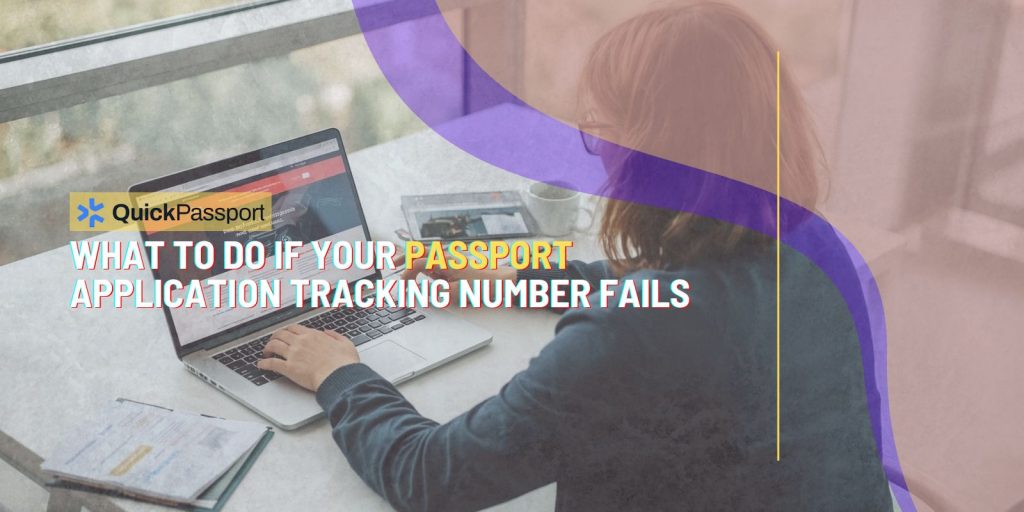Discovering that your passport application tracking number isn’t working can be one of the most frustrating experiences, especially when you have upcoming travel plans or urgent documentation needs. This technical glitch affects thousands of applicants daily, leaving them in limbo about their passport status and wondering whether their application is progressing normally through the system.
When your passport tracking number fails to provide updates or shows error messages, it doesn’t necessarily mean there’s a problem with your actual application. The tracking system, while generally reliable, can experience various technical issues ranging from server maintenance to database synchronization problems. Understanding the difference between a tracking system malfunction and an actual application issue is crucial for maintaining your peace of mind and taking appropriate action.
The passport application process involves multiple government agencies and complex databases that must communicate seamlessly. When any component of this intricate system experiences delays or technical difficulties, the tracking functionality often becomes the first casualty. This can leave applicants feeling helpless and uncertain about their travel document status, particularly during peak travel seasons when processing times are already extended.
Fortunately, there are numerous strategies and alternative methods for monitoring your passport application progress when the standard tracking system fails. From contacting customer service representatives to utilizing alternative tracking methods, applicants have several options for obtaining updates about their documentation status. Professional passport services like QuickPassport in Seattle have extensive experience helping clients navigate these technical challenges and can provide valuable guidance when standard tracking methods fail.
The key to successfully managing a non-functioning tracking number lies in understanding the various backup systems available and knowing when to escalate your inquiry to higher levels of customer service. This comprehensive guide will walk you through every step of the troubleshooting process, ensuring you have the tools and knowledge necessary to stay informed about your passport application status regardless of technical difficulties.
Key Takeaways
- Technical Issues Are Common: Passport tracking system failures occur regularly due to server maintenance, database updates, and high traffic volumes, particularly during peak travel seasons.
- Multiple Verification Methods: Always verify your tracking number accuracy by checking confirmation emails, receipts, and application documents before assuming system failure.
- Alternative Contact Channels: When online tracking fails, phone support, email inquiries, and in-person visits to passport acceptance facilities provide alternative status update methods.
- Timing Matters: Contact customer service during off-peak hours (early morning or late evening) for shorter wait times and more personalized assistance.
- Documentation Preparation: Keep all application receipts, confirmation numbers, and personal identification readily available when contacting support services.
- Professional Assistance Available: Passport expediting services like QuickPassport – Seattle can provide specialized tracking assistance and direct government contacts for complex cases.
- Escalation Procedures: Understanding when and how to escalate tracking issues to supervisors or specialized departments can significantly improve resolution times.
- Preventive Measures: Creating multiple tracking reminders and maintaining organized application documentation helps prevent future tracking complications.
Understanding Passport Tracking System Failures
The passport application tracking system operates through a complex network of interconnected databases managed by the U.S. State Department and various processing facilities nationwide. When your passport application tracking number stops working, several underlying factors could be responsible for the malfunction. Server maintenance represents one of the most common causes, as the government regularly updates and maintains these systems to handle millions of applications annually.

Database synchronization issues frequently occur when information transfers between different processing stages. Your application might progress from initial receipt to processing to printing phases, but if the databases don’t communicate effectively, the tracking system may display outdated information or error messages. This technical lag doesn’t indicate problems with your actual application but rather reflects the complex nature of government data management systems.
High traffic volumes during peak travel seasons can overwhelm the tracking system’s capacity, causing slowdowns, timeouts, and temporary service interruptions. Summer months, holiday periods, and spring break seasons typically see dramatic increases in passport applications, straining the digital infrastructure beyond normal operating parameters. During these periods, tracking number failures become significantly more common, affecting thousands of applicants simultaneously.
System updates and security enhancements also contribute to tracking number malfunctions. The government regularly implements cybersecurity improvements and software upgrades that can temporarily disrupt tracking functionality. These maintenance windows are usually scheduled during off-peak hours, but their effects can linger into regular business hours, causing confusion for applicants checking their status.
Immediate Troubleshooting Steps
Before contacting customer service or seeking professional assistance, several immediate troubleshooting steps can resolve common tracking number issues. Start by carefully verifying your tracking number accuracy against all official documentation, including confirmation emails, application receipts, and any correspondence from the passport agency. Even a single digit error can render the tracking system completely useless, so methodical verification is essential.
Clear your browser cache and cookies, then attempt accessing the tracking system from a different web browser or device. Browser compatibility issues and stored data conflicts can interfere with the tracking website’s functionality. Try using both desktop computers and mobile devices to determine whether the problem is device-specific or system-wide. Additionally, disable browser extensions and ad blockers that might interfere with government website functionality.
Check the official State Department website for announced system maintenance or known technical issues. The government typically posts notifications about planned maintenance windows and unexpected system outages. Social media channels and news outlets also frequently report widespread passport tracking system problems, helping you determine whether the issue affects multiple users or just your specific application.
Wait 24-48 hours before escalating the issue, as many tracking system problems resolve automatically once maintenance activities conclude or traffic volumes decrease. Document your troubleshooting attempts, including timestamps, error messages, and browser information, as this data will be valuable if you need to contact customer service representatives for additional assistance.
Consider using alternative tracking methods during this waiting period. Some applicants successfully track their applications through credit card or check processing notifications, as payment processing often provides indirect confirmation that applications are progressing through the system normally.
Alternative Methods for Checking Application Status
When standard online tracking fails, several alternative methods can provide valuable updates about your passport application status. Phone support through the National Passport Information Center offers direct access to customer service representatives who can manually check your application progress using internal systems not available to the public. These representatives often have access to more detailed information than the online tracking system provides.
Email inquiries through official State Department channels can be effective for non-urgent status requests. While response times vary from 3-7 business days, email support often provides comprehensive updates including specific processing stages and estimated completion dates. Include your full name, date of birth, application submission date, and any available confirmation numbers to expedite the inquiry process.
In-person visits to passport acceptance facilities or regional processing centers can yield immediate results for urgent cases. Bring all original documentation, including application receipts, identification, and proof of travel plans. Facility staff can often contact processing centers directly or access internal tracking systems unavailable through public channels.
Professional passport services like QuickPassport – Seattle maintain direct relationships with government processing facilities and can often obtain status updates more quickly than individual applicants. These services understand the intricacies of the passport system and can navigate bureaucratic challenges that might frustrate individual applicants attempting to resolve tracking issues independently.
Credit card and banking notifications can provide indirect application status updates. Monitor your payment method for any unusual charges or refunds, as these financial transactions often indicate application processing milestones or potential issues requiring attention.
Contacting Customer Service Effectively
Successful customer service interactions require strategic preparation and timing to maximize your chances of obtaining helpful information about your passport application status. Before calling the National Passport Information Center, gather all relevant documentation including your application receipt, confirmation numbers, personal identification, and travel itinerary if applicable. Having this information readily available will streamline the conversation and demonstrate your preparedness to the representative.

Timing your customer service calls strategically can significantly reduce wait times and improve service quality. Early morning calls (8:00-9:00 AM) and late afternoon calls (4:00-5:00 PM) typically experience lower call volumes than midday periods. Avoid calling on Mondays and Fridays when call volumes peak due to weekend backlog and pre-weekend urgency respectively.
Prepare specific questions and concerns before initiating contact. Rather than simply stating that your tracking number isn’t working, explain the specific error messages or behaviors you’ve observed. Describe your troubleshooting attempts and provide timestamps for when the tracking system last functioned properly. This detailed information helps representatives diagnose the issue more efficiently.
Remain patient and professional throughout the interaction, as customer service representatives are more likely to provide comprehensive assistance to courteous callers. If the first representative cannot resolve your issue, politely request escalation to a supervisor or specialist who might have access to additional resources or override capabilities.
Document all customer service interactions including representative names, reference numbers, and specific information provided. This documentation becomes valuable if you need to make follow-up calls or if conflicting information emerges from different representatives. Request confirmation emails or reference numbers for any promises or timelines provided during the conversation.
When to Seek Professional Assistance
Certain circumstances warrant seeking professional assistance from passport expediting services rather than continuing to troubleshoot tracking issues independently. If your travel date is within 14 days and your tracking number has been non-functional for more than 48 hours, professional intervention can help ensure your documentation arrives on time. Services like QuickPassport – Seattle specialize in urgent passport situations and maintain direct contacts within government processing facilities.
Complex applications involving name changes, citizenship documentation, or previous passport issues benefit from professional oversight when tracking systems fail. These applications often require additional processing steps that standard tracking systems don’t accurately reflect, making professional status monitoring particularly valuable for ensuring timely completion.
Repeated customer service failures or conflicting information from multiple representatives indicate systemic issues that professional services can navigate more effectively. Passport expediting companies understand government bureaucracy and can escalate issues through appropriate channels when standard customer service proves inadequate.
Business travelers and frequent international travelers often find professional passport services cost-effective for managing multiple applications or renewals. These services provide proactive monitoring and immediate notification of any processing issues, eliminating the stress and uncertainty associated with non-functional tracking systems.
Emergency situations such as family medical emergencies or unexpected business travel requirements justify professional assistance regardless of additional costs. Professional services can often expedite applications through emergency processing channels that aren’t available to individual applicants navigating the system independently.
QuickPassport – Seattle offers comprehensive tracking assistance and can often provide status updates within hours rather than days. Their established relationships with processing facilities and understanding of government procedures make them particularly valuable when standard tracking methods fail during critical timing situations.
Frequently Asked Questions
How long should I wait before contacting customer service about a non-working tracking number? Wait 24-48 hours after first noticing the tracking issue, as many problems resolve automatically during this timeframe. However, if you have travel within 14 days, contact customer service immediately regardless of the waiting period.
Can a non-working tracking number indicate problems with my actual application? No, tracking system failures are typically technical issues unrelated to your application status. Your passport may be processing normally even when tracking numbers don’t work properly.
Are there specific times when passport tracking systems are more likely to fail? Yes, tracking systems frequently experience issues during peak travel seasons (summer, holidays), Monday mornings, and during scheduled maintenance windows typically occurring overnight on weekends.
What information do I need when calling customer service about tracking issues? Prepare your full name, date of birth, application submission date, tracking number, confirmation numbers, and any relevant travel dates. Having this information ready will expedite the customer service process.
Can passport expediting services access better tracking information than individual applicants? Yes, professional services like QuickPassport – Seattle often have direct contacts within processing facilities and can access internal tracking systems not available to the general public.
Should I resubmit my passport application if the tracking number doesn’t work? Never resubmit an application solely due to tracking issues. Duplicate applications can cause significant delays and complications. Always verify your application status through customer service before considering resubmission.
How can I prevent tracking number issues in future passport applications? Keep detailed records of all confirmation numbers, save confirmation emails, and consider using professional passport services for time-sensitive applications to ensure comprehensive monitoring throughout the process.
What should I do if customer service representatives provide conflicting information about my application status? Request escalation to a supervisor, document all interactions with timestamps and representative names, and consider seeking assistance from professional passport services who can navigate bureaucratic inconsistencies more effectively.
Conclusion
Dealing with a non-functioning passport application tracking number can be stressful, but understanding the available alternatives and troubleshooting methods can help you maintain control over the situation. Remember that tracking system failures are common technical issues that rarely indicate problems with your actual application processing. By following the systematic approach outlined in this guide, you can effectively monitor your passport status regardless of digital tracking complications.
The key to success lies in preparation, patience, and knowing when to escalate issues to appropriate channels. Whether you choose to work through customer service representatives, seek assistance from professional services like QuickPassport – Seattle, or utilize alternative tracking methods, maintaining organized documentation and realistic expectations will serve you well throughout the process.
For urgent travel situations or complex applications, don’t hesitate to seek professional assistance early in the process rather than waiting for problems to resolve independently. The peace of mind and expert guidance provided by experienced passport services often justify the additional investment, particularly when travel plans hang in the balance.
Moving forward, consider implementing preventive measures such as maintaining detailed application records, using multiple tracking methods, and allowing extra processing time for future passport applications. These strategies will help you avoid the stress and uncertainty associated with tracking system failures while ensuring your travel documentation needs are met reliably and efficiently.






